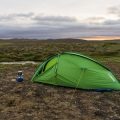1. Understanding Local Wildlife
When heading into the backcountry, its important to know which wild animals you might encounter. Each region in the U.S. has its own unique wildlife, and understanding their habits can make your trip safer and more enjoyable. Learning about the animals behaviors, where they live, and when theyre most active helps you avoid surprise encounters and encourages safe, respectful coexistence.
Know Before You Go
Before your trip, research the area youre visiting. National park websites, local ranger stations, or wildlife agencies often have helpful guides and safety tips. Focus on learning about common species in that specific region—whether it’s bears in Montana, mountain lions in California, or snakes in Arizona.
Common Wildlife by Region
| Region | Common Wildlife | Active Seasons |
|---|---|---|
| Rocky Mountains | Bears, elk, mountain lions | Spring through fall |
| Southeast U.S. | Alligators, snakes, wild boars | Mainly spring and summer |
| Pacific Northwest | Bears, cougars, deer | Year-round (less active in winter) |
| Southwest U.S. | Coyotes, bobcats, rattlesnakes | Largely spring through fall |
| Northeast U.S. | Bears, moose, foxes | Mainly spring through late fall |
Signs of Nearby Wildlife
If you know what to look for, nature often gives you hints that animals are nearby. Here are some signs to watch for:
- Dropped scat or tracks: Fresh footprints or droppings can tell you what animal passed by and how recently.
- Matted grass or disturbed soil: Could indicate bedding areas or feeding spots.
- Noises like rustling or calls: Birds warning each other, branches snapping—these could all signal movement nearby.
- Scent markings: Some animals mark their territory with strong-smelling urine or scent glands.
Pro Tip:
If you come across any of these signs, stay calm and avoid moving toward them. Instead, give wildlife plenty of space and adjust your route if necessary.
Remember:
The goal isnt just to avoid danger—its also about respecting the natural environment and allowing wildlife to go about their lives undisturbed. Being informed is one of the best ways to camp responsibly.
2. Proper Food Storage and Scent Control
One of the most important ways to stay safe from wildlife while camping in the backcountry is by properly storing your food and controlling scents. Wild animals, especially bears, have an incredible sense of smell and can be attracted from miles away if they catch a whiff of food or other scented items. That’s why following proper storage techniques is a must.
Backcountry Food Storage Options
Depending on where you’re camping, different methods may be recommended or even required by local regulations. Here are some common options:
| Storage Method | Description | Best For |
|---|---|---|
| Bear-Resistant Canisters | Hard-sided containers designed to be bear-proof; usually approved by national parks. | Areas with high bear activity or where required by law. |
| Hanging Food Bags (Bear Hang) | Bags suspended 10-15 feet off the ground and 4-6 feet away from tree trunks. | Remote areas without specific container rules. |
| Bear Lockers | Metal boxes provided at designated campsites for storing food and scented items. | Established campgrounds or trailheads in bear country. |
Scent Control Tips
Its not just food that attracts animals—anything with a strong scent can bring unwanted visitors into your campsite. This includes toothpaste, deodorant, sunscreen, trash, and even dirty dishes. Use these tips to keep your site scent-free:
- Pack it out: Don’t leave any food scraps behind. Pack out all trash, including wrappers and leftovers.
- Use odor-proof bags: Store toiletries and snacks in odor-resistant bags or containers.
- No cooking in tents: Always cook at least 100 feet away from your sleeping area.
- Clean up immediately: Wash dishes right after eating and dispose of greywater far from camp.
- Avoid scented products: Choose unscented versions of hygiene items whenever possible.
Keep Your Camp Safe
A clean campsite is a safe campsite. By minimizing smells and storing food properly, you reduce your chances of attracting curious—and potentially dangerous—wildlife. Not only does this keep you safer, but it also protects the animals by discouraging them from associating people with food.

3. Keeping a Clean Campsite
One of the most effective ways to stay safe from wildlife while camping in the backcountry is by keeping your campsite clean and scent-free. Wild animals have an incredible sense of smell, and even small traces of food or trash can attract them to your site.
Proper Waste Disposal
Always pack out all garbage, including food wrappers, scraps, and hygiene products. Never bury or burn leftover food—these methods dont eliminate odors and can actually lure animals closer.
Trash Management Tips:
| Do | Dont |
|---|---|
| Use bear-proof containers or hang food in a bear bag at least 10 feet off the ground and 4 feet away from tree trunks. | Leave trash bags lying around the campsite overnight. |
| Double-bag smelly items like used wipes or food packaging before packing them out. | Bury food waste thinking it will decompose quickly—it won’t. |
| Dispose of gray water (used dishwater) at least 200 feet away from your camp and any water source. | Pour dirty water near your tent area or into streams. |
Clean Cookware Thoroughly
After meals, wash dishes immediately using biodegradable soap and hot water. Be sure to strain food particles out of wastewater before disposing of it properly. Store cleaned cookware in sealed containers or stash them with your bear bag to avoid attracting curious critters.
Quick Tip:
If youre in a rush, use unscented wipes to clean utensils—but always pack those used wipes out with you!
4. Safe Encounters and Wildlife Etiquette
When youre deep in the backcountry, coming across wildlife is part of the adventure—but its important to stay safe and respectful. Whether you spot a bear, cougar, or snake, knowing how to react can make all the difference. Here’s what you need to know to handle those encounters calmly and responsibly.
Know How to Respond
The first rule of thumb: never run. Sudden movements can trigger a predators chase instinct. Instead, stay calm, avoid direct eye contact (which animals may see as a threat), and slowly back away while keeping the animal in sight.
Common Wildlife Encounters and How to Handle Them
| Animal | What to Do | What NOT to Do |
|---|---|---|
| Bear | Speak in a calm voice, back away slowly, and make yourself look larger if it approaches. | Don’t run, scream, or drop your pack—it can protect your back if attacked. |
| Cougar (Mountain Lion) | Maintain eye contact, stand tall, and throw small objects if needed to scare it off. | Don’t crouch down or turn your back—it may see this as an opportunity to pounce. |
| Snake | Stop immediately, slowly step away, and give it space to move on. | Don’t try to touch, catch, or provoke it—even non-venomous snakes can bite. |
Wildlife Etiquette Tips
- Never feed wild animals: This changes their natural behavior and can make them aggressive toward humans.
- Keep your distance: Use binoculars or zoom lenses for photos instead of getting closer.
- Stay on trails: Venturing off-path increases your chances of surprising wildlife.
- Control pets: Keep dogs leashed—they can provoke wildlife or lead predators back to you.
- Store food properly: Use bear-proof containers or hang food away from camp at least 10 feet off the ground and 4 feet from tree trunks.
Remember:
The goal is peaceful coexistence. Treat every animal encounter with respect, caution, and patience. Your safety—and theirs—depends on it.
5. Using Deterrents and Staying Prepared
When youre deep in the backcountry, staying safe from wildlife isnt just about knowing what to do during an encounter—its also about being ready before anything happens. One of the most important tools you can carry in bear country is bear spray. Its a powerful deterrent that can stop an aggressive animal without causing permanent harm. But it’s only effective if you know how to use it properly.
Bear Spray Basics
| What to Know | Details |
|---|---|
| Carry Accessibly | Keep it on your belt or shoulder strap—not buried in your pack. |
| Practice First | Use an inert training canister to get comfortable with aiming and spraying. |
| Check Expiry Date | Bear spray loses pressure over time. Always check the expiration date before your trip. |
Stay Connected and Visible
In addition to carrying deterrents, its smart to have a plan for emergencies. Always tell someone where youre going and when you expect to be back. This simple step can make a big difference if something goes wrong.
Group Travel Tips
- Hike in groups: Wildlife is less likely to approach a group than a solo hiker.
- Make noise: Talk, sing, or clap occasionally to avoid surprising animals around blind corners or dense brush.
- Stay visible: Wear bright clothing and avoid hiking at dawn or dusk when many animals are most active.
Quick Safety Checklist
- [ ] Bear spray within reach and tested
- [ ] Shared itinerary with friend or family
- [ ] Hiking with group when possible
- [ ] Making noise regularly on trail
- [ ] Emergency whistle or noise maker packed
A little preparation goes a long way when it comes to preventing dangerous wildlife encounters. By staying alert and ready, you can enjoy the backcountry while keeping yourself—and the animals—safe.


